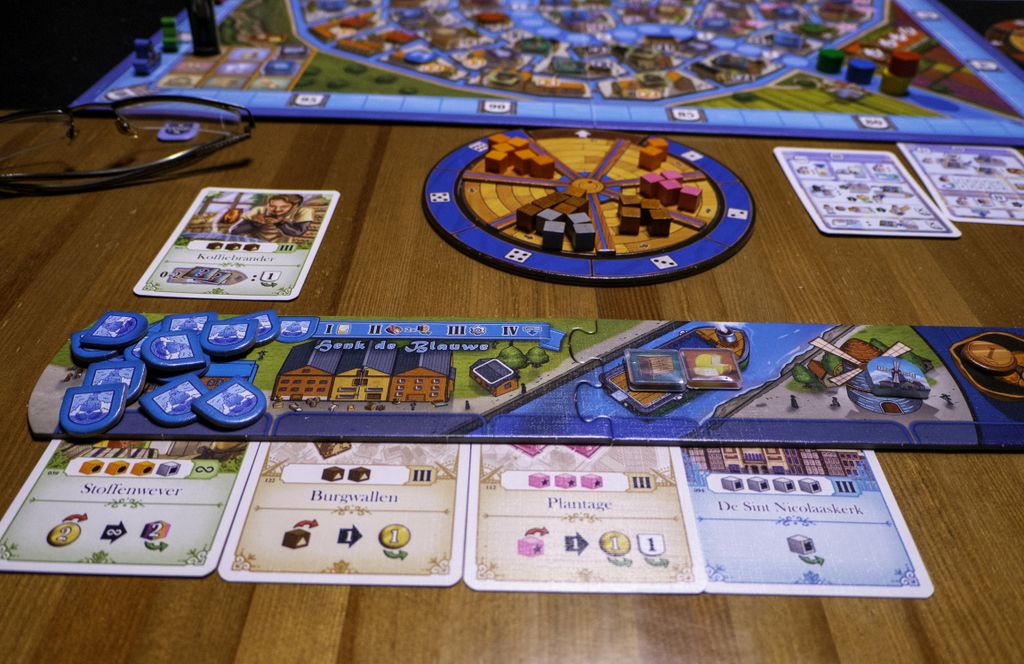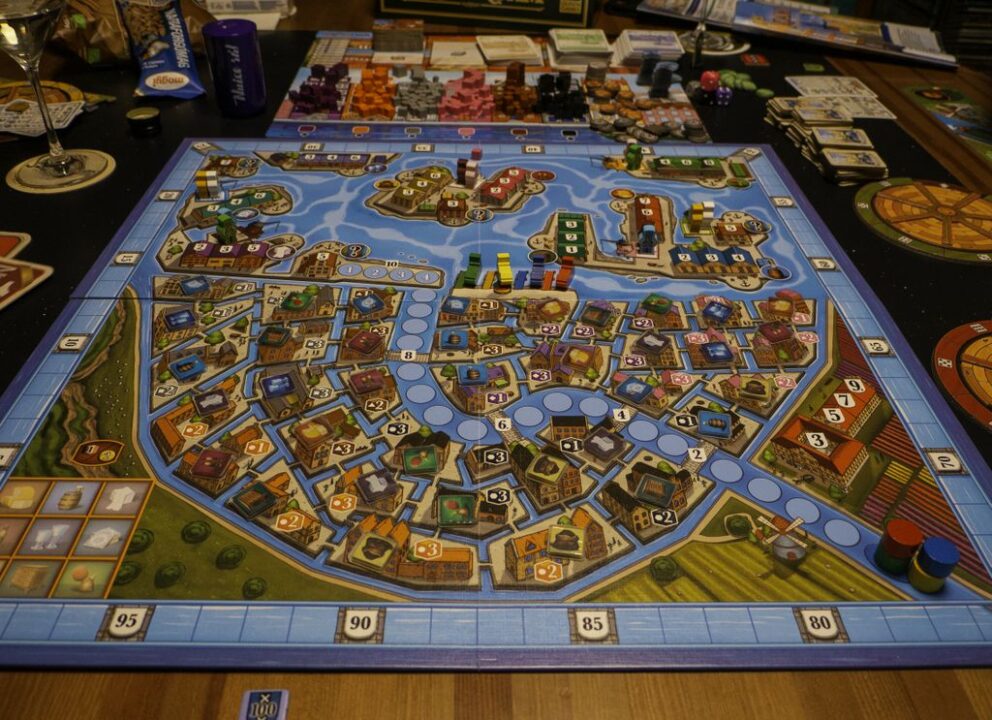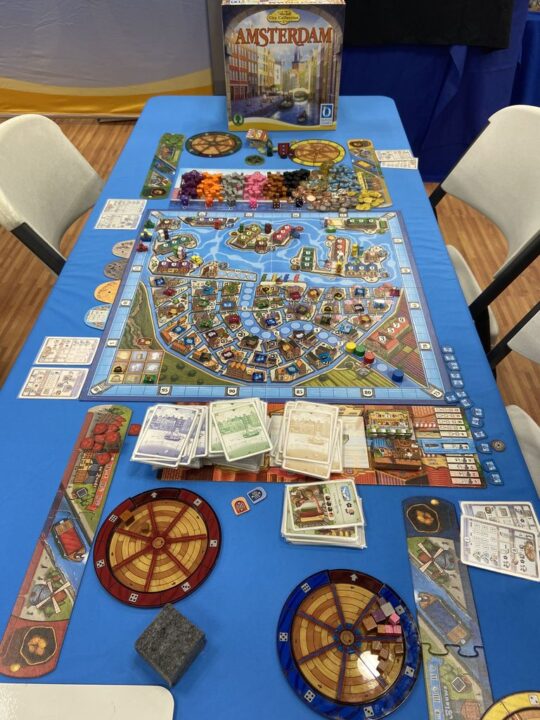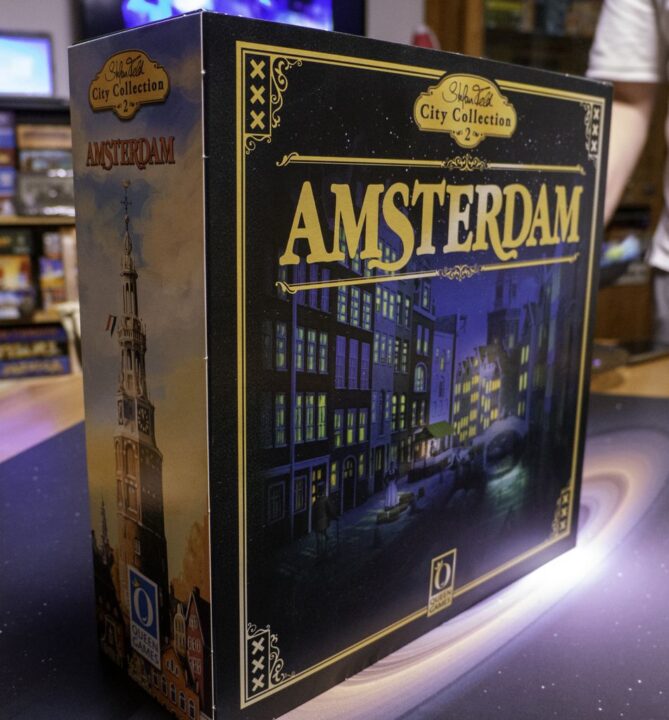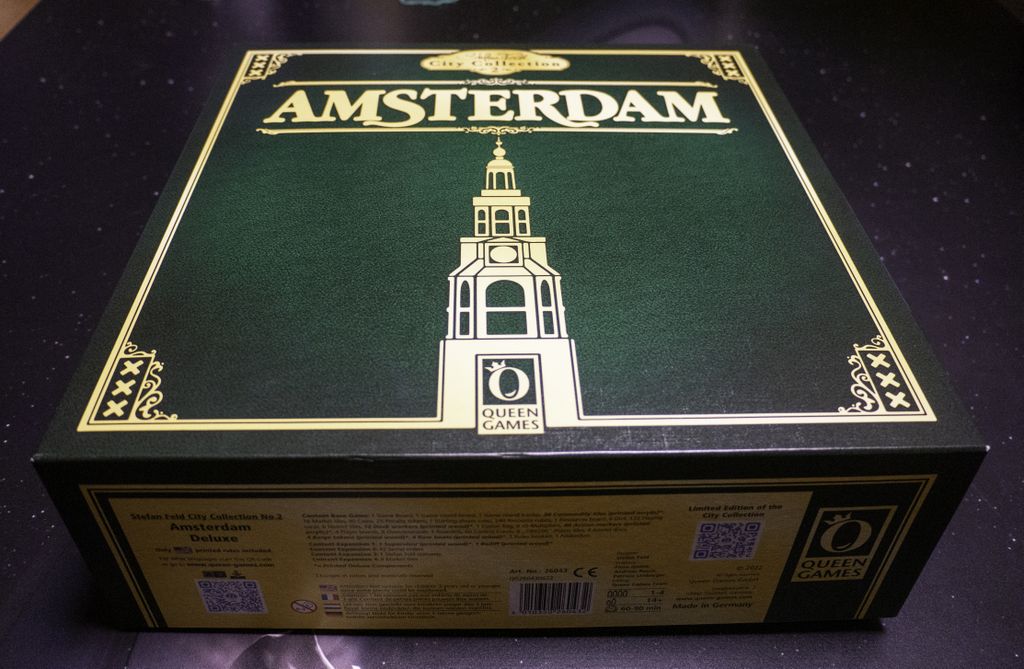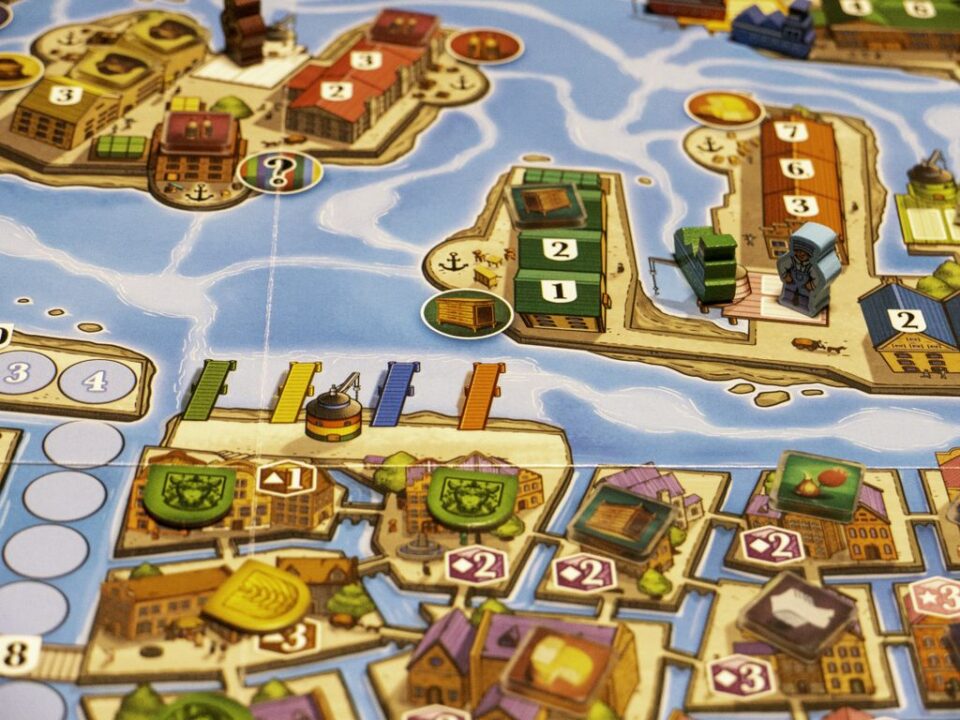Hey there, fellow board game lovers! Today I’m reviewing the game Amsterdam. If you’re a fan of strategic planning, resource management, and some good ol’ friendly competition, then you’re in for a treat. I’ve gathered my friends, rolled the dice, and pored over the rules to give you the lowdown.
How It Plays
Setting up
First, unfold the game board and lay it on a flat surface. Each player gets a player board, starting resources, and their unique player pieces. Shuffle the decks of cards and place them in their respective spots on the main board. Roll the dice to decide the starting player.
Gameplay
Players take turns in a clockwise order. Each turn has three phases: Resource Management, Actions, and Event Resolution. In Resource Management, players collect resources from their buildings. During the Actions phase, players can construct buildings, trade resources, or undertake special projects. Event Resolution involves drawing event cards and resolving their effects, which can change the state of the game dramatically.
Winning the game
The game ends when a player completes a set number of objectives, or when the event deck runs out. Points are tallied based on resources, buildings, and special achievements. The player with the most points wins and earns the title of Master Merchant of Amsterdam!
Want to know more? Read our extensive strategy guide for Amsterdam.
Gameplay Mechanics in Amsterdam
Alright, board game buddies, let’s chat about the gameplay mechanics in the board game Amsterdam. This game is like mixing your favorite cocktail—it’s got a shot of strategy, a splash of luck, and a twist of competition.
Amsterdam runs on a blend of Euro-style mechanics and resource management. Each player acts as a trader in the 17th century, aiming to build wealth and outsmart others. You must gather resources like spices, textiles, and tulips. Then, trade these in the market to earn guilders (the currency in the game). Strategy tip: Don’t put all your tulips in one basket!
The game also incorporates a clever action-selection mechanic. Players place action markers on various parts of the board to carry out specific actions: trading, building, or navigating the canals. The twist? You need to plan your moves ahead, as certain actions can block others. This makes timing crucial, like trying to pick the shortest queue at the supermarket.
While the game balances strategy and luck, it does lean more towards strategic planning. The dice rolls can be a bit unpredictable but don’t dictate the game’s outcome. This means you can’t just rely on good fortune; you’ve got to use your brain—a bit of a bummer if you’re more of a ‘roll-and-win’ kind of player.
In a nutshell, Amsterdam offers a rewarding challenge for those who enjoy strategic thinking and resource management. Now, let’s move on to the juicy part: Player Interaction!
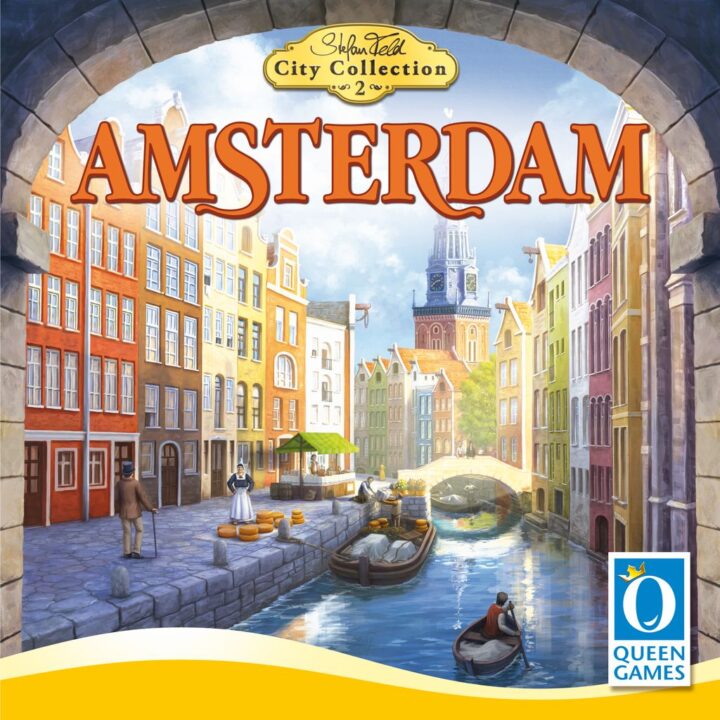
Player Interaction in Amsterdam: A Dance of Strategy and Competition
Let’s talk about one of my favorite parts of any board game: player interaction. Amsterdam shines here like a diamond in a deck of cards. If you’ve ever tried playing Monopoly with your family and found it a bit too cutthroat, then Amsterdam might be the refreshing mix of strategy and friendly competition you need.
The game lets you trade goods, strategize your moves, and even form temporary alliances. Picture this: You’re ahead in the game, but you need one more resource to lock in that sweet victory. You eye your friend’s resource pile and make them an offer they can’t refuse—or so you think! The negotiation dances are intense but never overbearing, balancing diplomacy with backstabbing perfectly.
But what truly sets Amsterdam apart is the subtle tension in every interaction. Decisions ripple across the board, affecting not just you, but everyone else. You’ll find yourself constantly asking, “Should I help them now and risk them beating me later?” It’s a mind game on a cardboard battlefield, and I love every minute of it.
The player interaction isn’t just about trading and alliances. There are moments when blocking someone’s path or outbidding them at an auction feels like a masterstroke. It’s not just what you do on your turn; it’s what you do to mess up everyone else’s plans that makes Amsterdam so engaging.
In the next section, I’ll be diving into the replayability factor. Trust me, you’re going to want to stick around for this one!
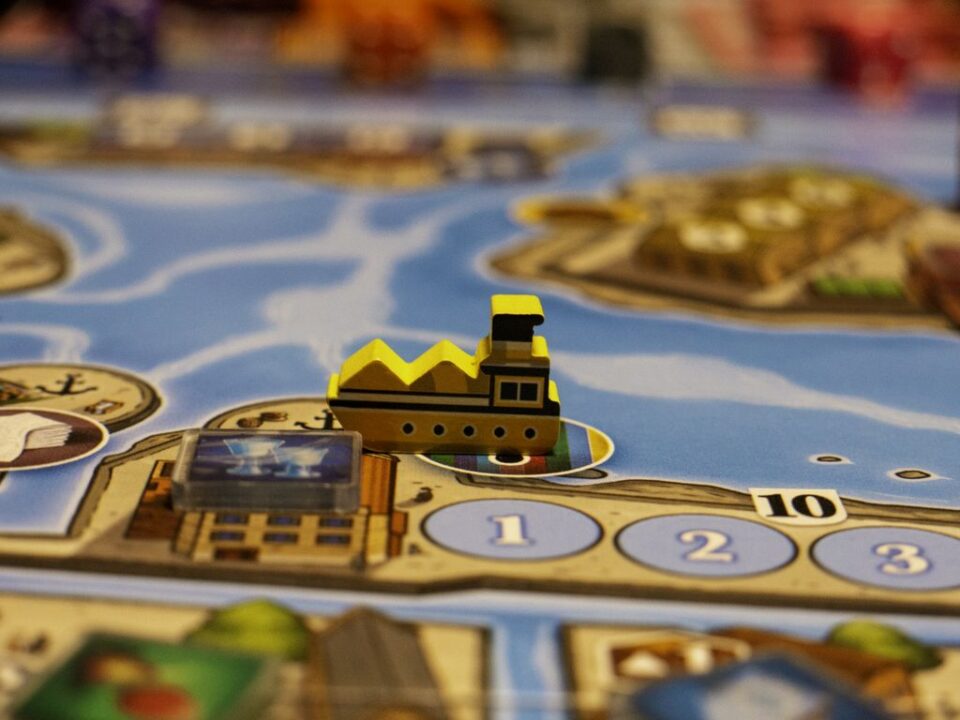
Exploring the Replayability of Amsterdam
Amsterdam hits high marks in the replayability department, my friends. I’ve played it countless times, and each game feels new and exciting. The game’s dynamic nature comes from its variable setup and shifting strategies. The resource locations, objectives, and events change each time, keeping players on their toes.
The strategic depth is another layer that adds to the replayability. It’s like a puzzle where the pieces are always changing shape, but the picture in your head is never quite complete. You’ll find yourself thinking about the game long after it’s packed away, plotting new strategies for the next session.
There’s also a variety of paths to victory. You could focus on gathering resources, building structures, or investing in trade. Each game will force you to adapt based on your friends’ moves and the ever-changing board state. And let’s not forget the expansion packs. They add new elements and layers of complexity, ensuring you won’t run out of fresh challenges any time soon.
Even after dozens of plays, Amsterdam manages to feel fresh and engaging. It’s like your favorite movie – no matter how many times you watch, you always catch something new. The blend of strategic planning, competition, and evolving gameplay ensures that you’ll keep coming back for more.
Ready to unpack the essence of Amsterdam? Get your snacks and sense of humor ready as we move to the next section and discuss Component Quality!
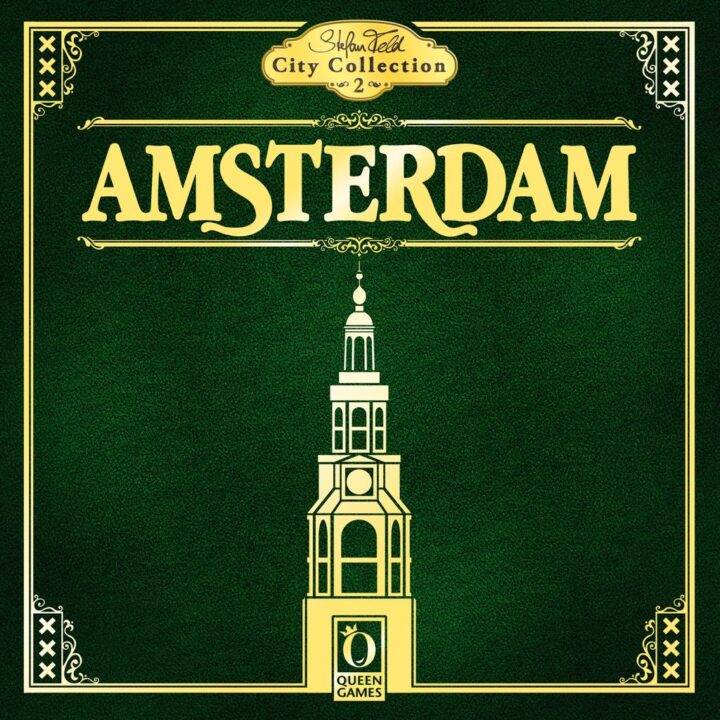
Component Quality of Amsterdam Board Game
Alright folks, let’s talk about the nuts and bolts of Amsterdam’s component quality. When I cracked open the box, it felt like Christmas morning. The game pieces are top-notch. The board itself is a thing of beauty. It’s like a miniature work of art. You can almost see the canals shimmering!
The cards in Amsterdam deserve a special mention. They are made from thick, durable cardstock. They won’t wear out after a few games. Trust me, I’ve had my fair share of flimsy cards that look like they’ve been through a war after one game. Not these!
Now, let’s talk about the tokens. There are heaps of them in Amsterdam, from resources to player markers. They are well-designed and easy to handle. No tiny bits getting lost in the carpet, which is a win in my book. The wooden pieces feel hefty and satisfying to move around.
The instruction manual is also worth a shout-out. It’s clear, concise, and filled with illustrations. Even my friend Dave, who usually zones out during rule explanations, could follow along. It’s like the Ikea manual of board games, but without the frustration.
The one downside? The box insert. It’s not the greatest at organizing all the bits and pieces. You might end up with a jumbled mess if you’re not careful. But hey, that’s what ziplock bags are for, right?
All things considered, if you’re a fan of quality components, Amsterdam delivers in spades. It’s a beautiful game that feels great to play. So, do I recommend it? Absolutely! Just keep those ziplock bags handy.
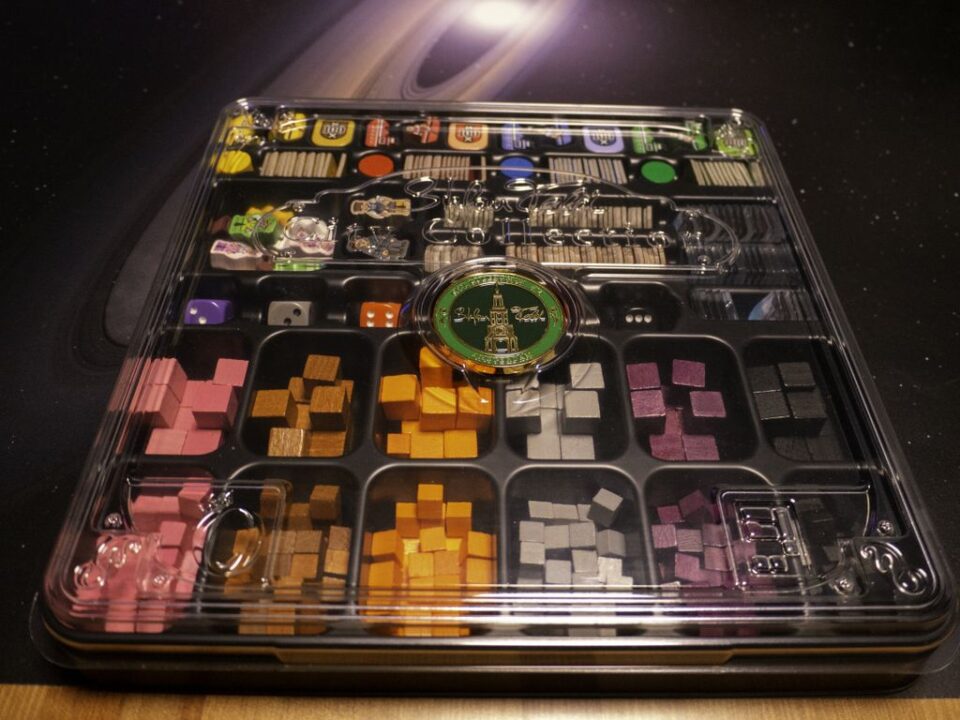
Conclusion
So there you have it, folks! Amsterdam stands out with its strategic gameplay, solid player interaction, high replayability, and quality components. Sure, the box insert could use an upgrade, but that’s a minor quibble in an otherwise excellent game. Whether you love planning out every move or negotiating your way to victory, Amsterdam offers a rich and rewarding experience. Gather your friends, set the stage, and enjoy this gem of a game. Thanks for reading, and happy gaming!

